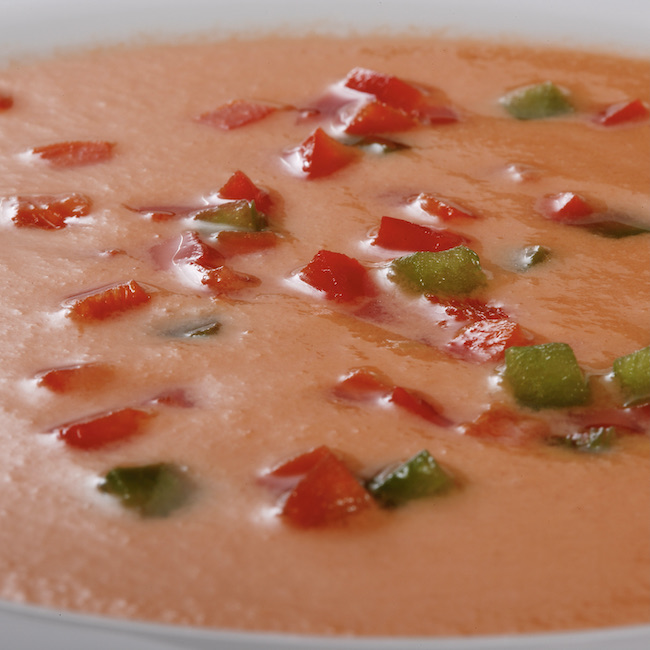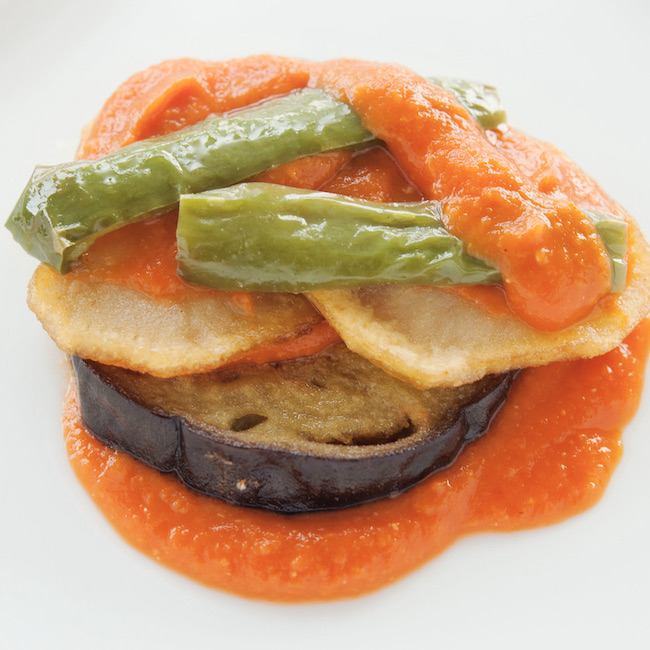.png.transform/rendition-xs/image_image%20(1).png)
The Unsung World of Spanish Vegetarian Tapas
Marcona almonds, olives, spinach croquetas, fried aubergines… a full tasty menu with no fish or meat in it
 by Jenny Chandler - @jennychandleruk
by Jenny Chandler - @jennychandleruk
Spain is famed the world over for its exceptional cured meats and seafood, sometimes to the extent that its vegetable dishes are all but eclipsed. Many assume that vegetarians won’t get much of a look in at your average tapas bar and yet, the beauty of this informal style of eating with so many small plates on offer, is that there really is something for everyone. Tapas can range from a bowl of nuts, or a pincho on a stick, through to a miniature stew; they are fundamentally something to tickle your tastebuds, or keep hunger at bay, whilst you enjoy a drink in the bar.
If you’re after instant gratification, as you take your first sip, nothing could better a small plate of buttery Marcona almonds or some tangy green olives. Tapas bars will often serve just one particular type of olive: the ever popular Manzanilla, or the crushed Malagueña, the tiny Arbequina or the giant Gordal, there are countless varieties. They may be stuffed with pickled garlic, almonds or red pepper (sometimes anchovy too, so do check).
And on the subject of olives, you can’t overlook the incredible range of world class extra virgin olive oil (EVOO) on offer. Over 250 native species of olive, grown in a variety of wildly different terrains and local climates produce outstanding oils of distinctive aromas and flavours. The magical splash of EVOO elevates simple vegetables and cheeses to another level, and enriches so many dishes, you could call it the lifeblood of the tapas kitchen.
A slither of great cheese makes the perfect accompaniment to a drink with dozens of superb sheep’s, goat’s and cow’s milk cheeses on offer. There are increasing numbers of regional cheeses produced using vegetarian rennet, including many of the award-winning sheep’s cheeses from Extremadura, such as Torta del Casar (that have always used thistle rennet).

From 'tortilla' to 'patatas bravas'
The benchmark of a truly great tapas bar is surely the tortilla; the simple potato omelette is all about the very best ingredients being cooked with precision. Free range eggs, a well chosen potato (the Galician potatoes are legendary), onions or not (that can be controversial), and then skilled frying to give that juicy, just-set, perfect texture. A good tortilla can be sublime. Revuelto, lightly scrambled egg, is another classic, often featuring a local treat such as wild asparagus or foraged mushrooms. And, on the subject of wild mushrooms, they are a seasonal delicacy not to be missed, often served simply griddled or fried with garlic and herbs.
Crunchy, deep-fried foods have always been a tapas favourite, with croquetas high on the list. Vegetarian croquettes can be made with spinach, local cheeses, wild mushrooms and, even taken to new heights with a touch of truffle. Crisped, deep-fried slithers of baby artichoke are a springtime favourite, whilst fried slices of aubergine are served up with miel de caña (natural sugar cane molasses) throughout the summer. In winter you may even find the delicious fried cardoon thistle stalk, known as cardo. Vegetables such as broccoli, green peppers and spring onions can be fried in the lightest of batters and are sometimes served with Catalan romesco sauce, a superb combination starring hazelnuts and almonds, peppers, garlic and tomato.
Potato-based tapas are always popular, with plenty of vegetarian options available. Patatas bravas, the crispy potatoes with their spiced tomato sauce probably top the bill, especially with the addition of some garlicky, mayonnaise-like, alioli. Ensaladilla rusa, a diced potato and vegetable salad which can contain boiled egg (and sometimes tuna too, so best to ask), is an absolute winner when dressed with homemade mayonnaise. Out west, The Canary Islands have their fabulous speciality of tiny new potatoes, papas arrugadas, with spicy mojo dipping sauces.

Veg-friendly recipes: the Chef’s 'tapas' menu
When it comes to veg’ Spanish chefs are spoilt for choice. Superb ingredients are allowed to sing in a dish as simple as pan con tomate, which is quite literally good bread rubbed with garlic and ripe tomato flesh, served with extra virgin olive oil and salt. You will find plates of fried green Padrón peppers or wood-roasted piquillo peppers stuffed with local cheese. Various combinations of cooked peppers, tomatoes, courgettes and aubergines pop up in tapas bars in different regions, there’s the piperada of the Basque Country and then the pistos of Murcia, Extremadura and La Mancha. The Catalans have their escalivada where charred peppers, aubergine and onions take on the smokiness of the fire , whilst Mallorca’s tumbet is layered with fried vegetables. Coca, the Spanish answer to a pizza, makes great finger food; a thin bread or pastry base is topped with options such spinach with raisins and pine kernels, or slow-roasted peppers, and eaten at room temperature.
On a sweltering summer day there is really nothing more refreshing than a tapas portion of chilled tomato gazpacho, or a bowl of its thicker, creamier cousin, salmorejo. Ajoblanco, the almond and garlic soup, is sometimes served in small glasses too, topped with green Moscatel grapes. Modern “gazpachos” made with beetroot in the north, or local avocados down south, are hitting menus too, as the call for more adventurous plant-based food grows.

Pulses have always been on the tapas menu, economical and comforting; Andalucian garbanzos con espinacas, spinach with chickpeas, is a delicious traditional dish. Meanwhile modern chefs are playing around with top notch beans such as the tiny arrocinas, or giant judiones, serving them with combinations such as Valencian oranges, fennel and an almond cream, or with heritage tomatoes, capers and a seaweed-infused oil.
As demand for more plant-focused food is on the up, the variety of vegetable-based tapas is increasingly exciting. Spanish chefs, known for their extraordinary creativity, are dreaming up innovative combinations showcasing their local larder, complimenting an already existing array of traditional tapas that just happen to be vegetarian.

